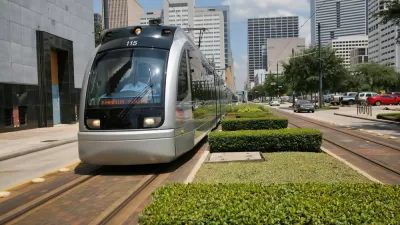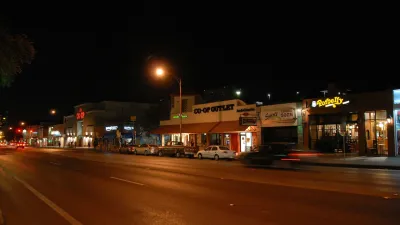The city of Edmonton’s comprehensive planning strategies aim for an "innovation ecosystem" that can compete with cities yet to be built.
Over the next 30 years, Edmonton—in Alberta, Canada—will rebuild each of its neighborhoods. It's also preparing a bid for the Commonwealth Games, and turning a 600-acre site into a zero-emissions community.
But City Manager Simon Farbrother stresses that this is not just a list of one-off endeavors.
"We try to bring a systems approach to our decision-making," he told The Planning Report. "We don’t do projects—we build a city."
The planning principles contained in Edmonton’s guiding document, "The Way Ahead," emphasize infill development and light-rail connectivity. Investment in transit options, in growing "up, not out," and in revitalizing the downtown core are all part of a broader strategy to create an "innovation ecosystem"—an "environment where people want to be."
Edmonton acts on this strategy through partnerships with the Edmonton Economic Development Corporation, financing mechanisms comparable to those in the US, and collaboration with the provincial government in Alberta.
A global future is at the heart of Edmonton’s vision—one that promises tools and competition still to come. Farbrother explains: "There are a hundred new cities being built over the next 20 years that don’t exist today and will have every technological advantage. For us to stay where we are, we have to jump 100 cities in the next 20 years. That’s our framework."
FULL STORY: Edmonton, Canada’s City Manager Prioritizes Building a City Rather Than Just Projects

Trump Administration Could Effectively End Housing Voucher Program
Federal officials are eyeing major cuts to the Section 8 program that helps millions of low-income households pay rent.

Planetizen Federal Action Tracker
A weekly monitor of how Trump’s orders and actions are impacting planners and planning in America.

Ken Jennings Launches Transit Web Series
The Jeopardy champ wants you to ride public transit.

Crime Continues to Drop on Philly, San Francisco Transit Systems
SEPTA and BART both saw significant declines in violent crime in the first quarter of 2025.

How South LA Green Spaces Power Community Health and Hope
Green spaces like South L.A. Wetlands Park are helping South Los Angeles residents promote healthy lifestyles, build community, and advocate for improvements that reflect local needs in historically underserved neighborhoods.

Sacramento Plans ‘Quick-Build’ Road Safety Projects
The city wants to accelerate small-scale safety improvements that use low-cost equipment to make an impact at dangerous intersections.
Urban Design for Planners 1: Software Tools
This six-course series explores essential urban design concepts using open source software and equips planners with the tools they need to participate fully in the urban design process.
Planning for Universal Design
Learn the tools for implementing Universal Design in planning regulations.
Heyer Gruel & Associates PA
Ada County Highway District
Institute for Housing and Urban Development Studies (IHS)
City of Grandview
Harvard GSD Executive Education
Toledo-Lucas County Plan Commissions
Salt Lake City
NYU Wagner Graduate School of Public Service





























